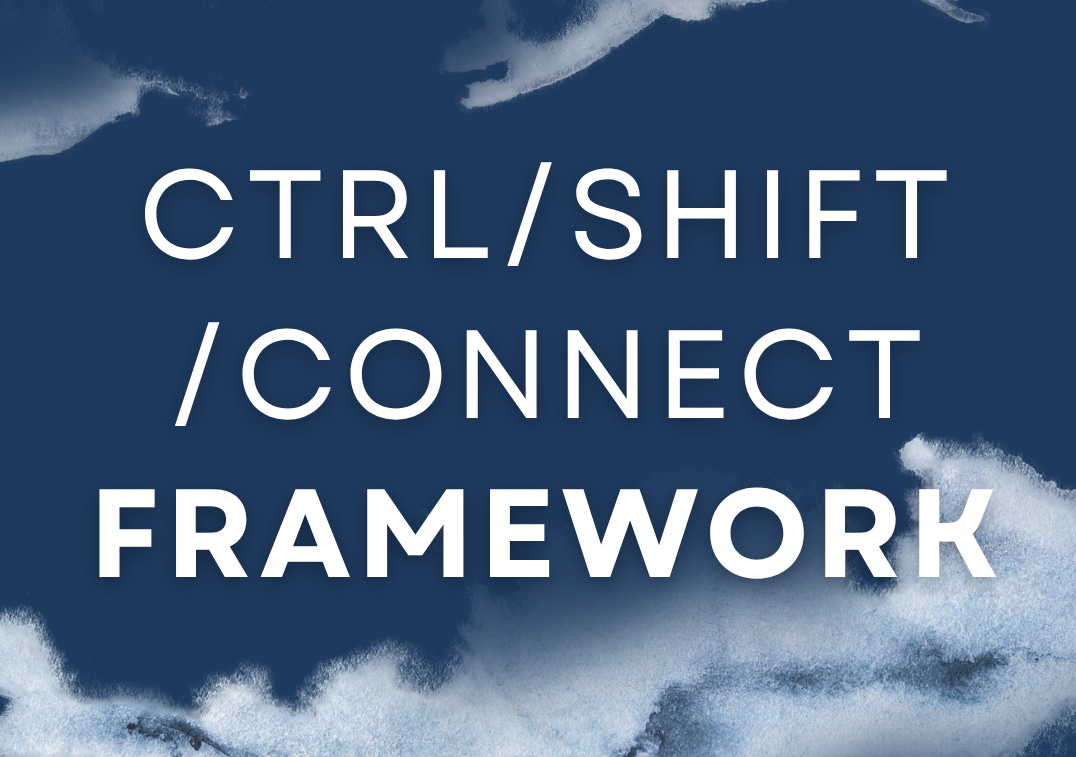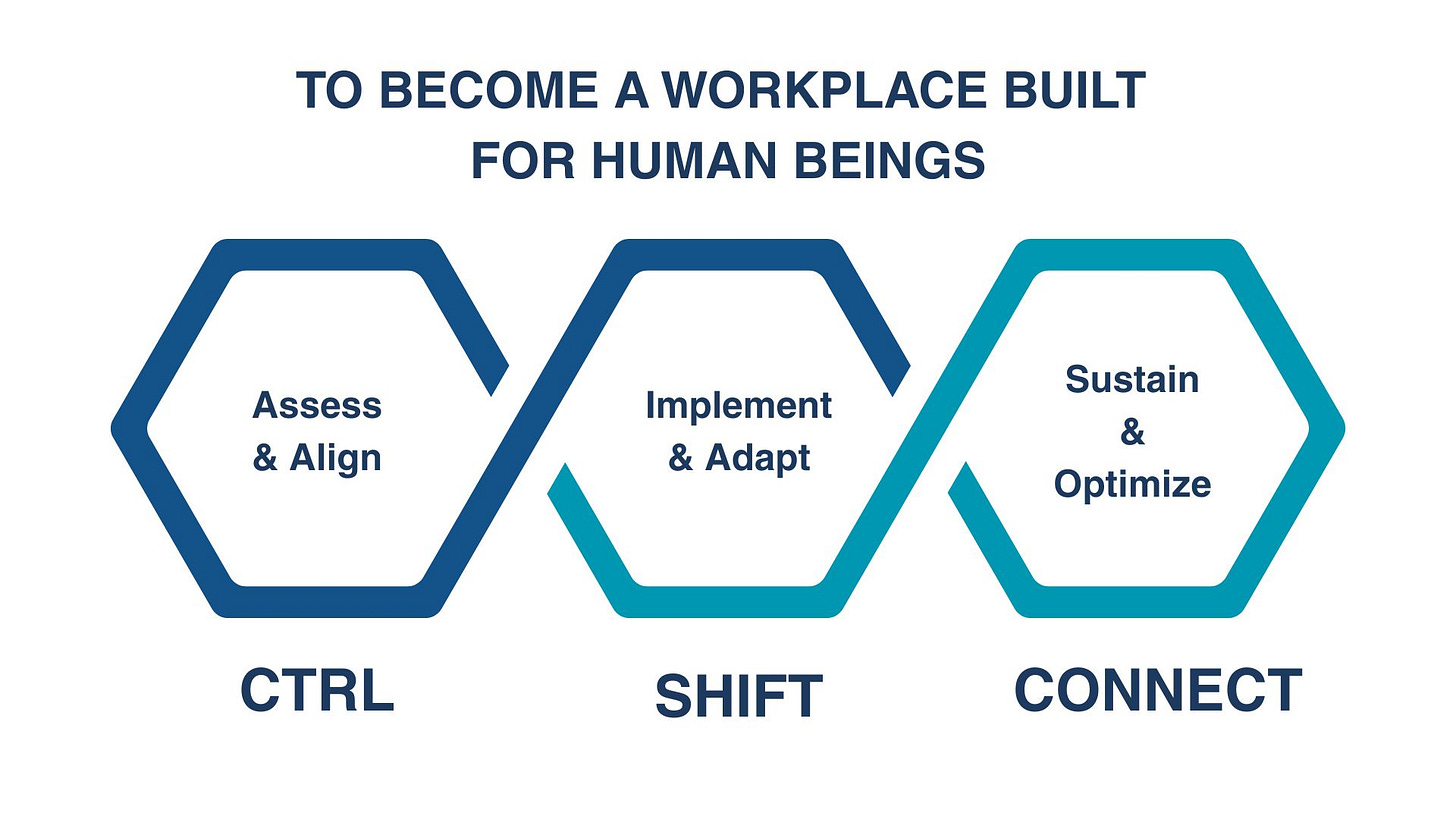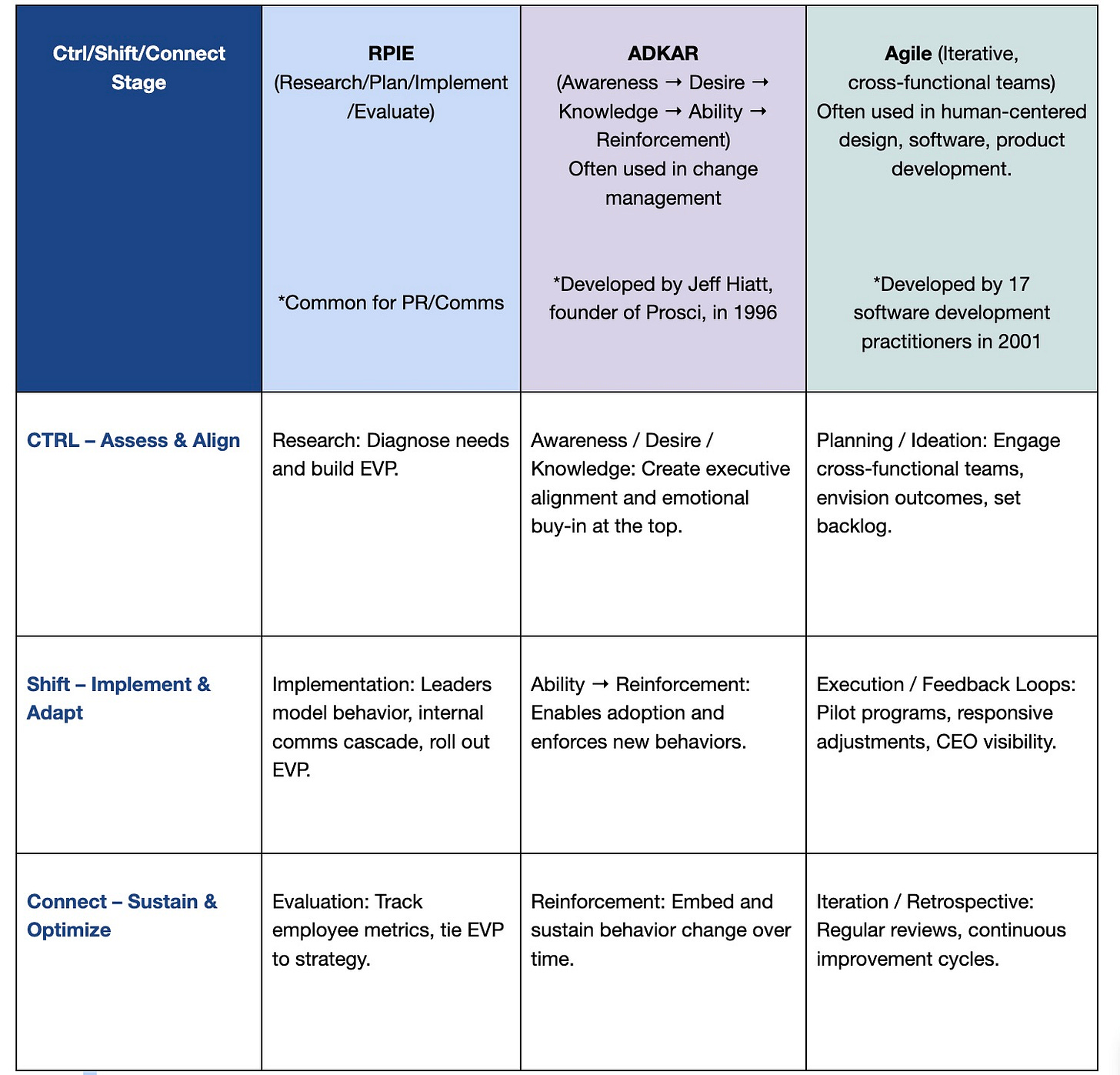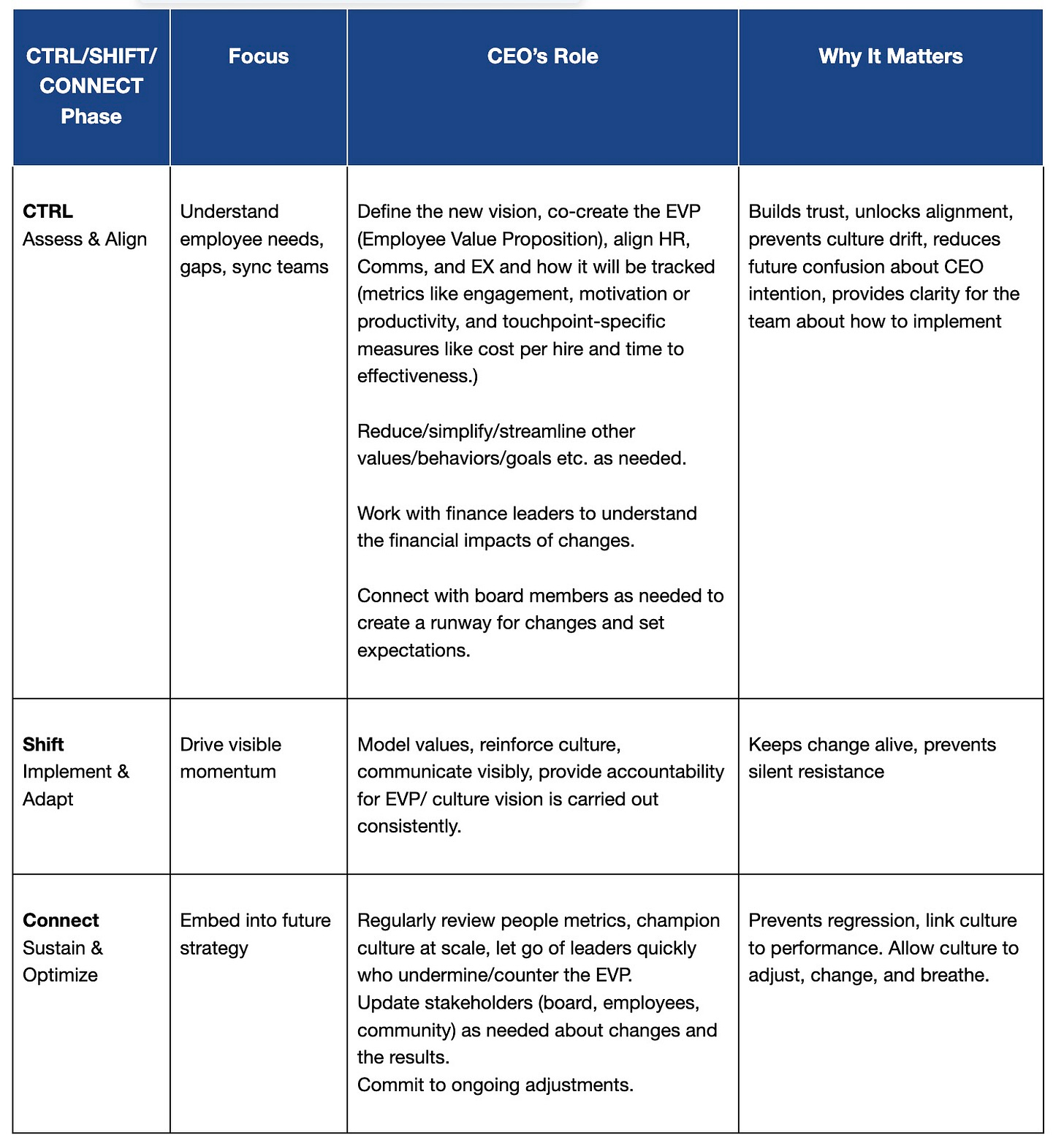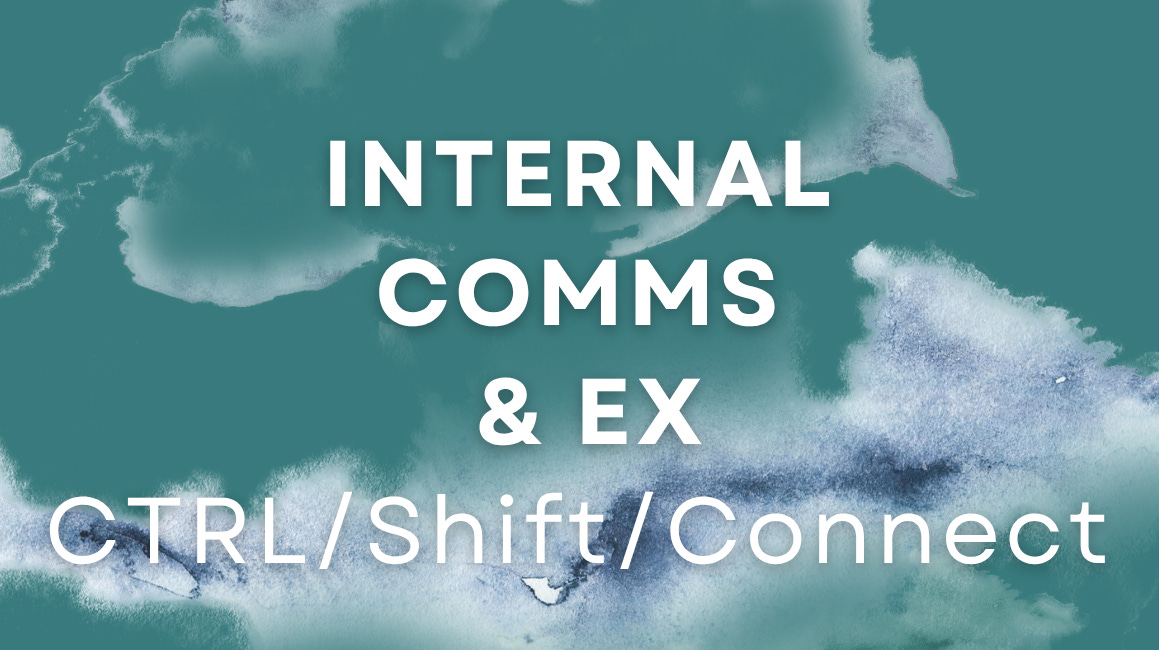In an era defined by disruption, trust erosion, and AI-fueled acceleration, leadership can no longer rely on old playbooks. Ctrl/Shift/Connect is a flexible framework to help CEOs lead cultural transformation with clarity, without micromanaging execution.
Think of Ctrl/Shift/Connect as a stabilizing guide for CEOs who want to lead their organization toward greater trust, clarity, and sustainable performance, by creating a workplace for human beings (vs. human doings).
When employee engagement stalls and trust erodes, you might feel the urge to double down on pressure and radical optimization tactics to push for more from your employees. But that approach can backfire, shutting people down and creating us vs. them dynamics across your org.
If you’ve decided that trust, clarity, and humanity can be your company’s ultimate advantage, this framework can help with implementation.
Before you implement, you’ll want to start with:
1) Getting clear on your vision for what a workplace built for human beings can look like at your company (and why it’s important to you).
2) Understanding the doubts you’ll encounter from others (and yourself) and how you’ll respond.
Why a Cross-Functional Approach is Essential
Enterprise-wide approaches to work design are the ideal way to increase employee engagement, alignment, and well-being.
Zeynep Ton, founder of the Good Jobs Institute, emphasized that their strategy is more like a cross-functional system. “The whole idea of the good jobs strategy is you invest in people, and you make choices that make their work more productive and enable higher contributions,” Ton explained in MIT News. “Without the work design changes, investment in people is unlikely to pay off.”
Read how their approach to creating “good jobs” at Sam's Club included an overhaul of operations and workforce practices, resulting in an engaged workforce and a 15% increase in labor productivity.
The ultimate goal is for the organization’s norms, culture, policies, communications, and leadership to actively support employees’ career well-being and overall thriving. When employees feel secure, valued, and able to grow (like what the Good Jobs Institute works toward), they bring more energy, creativity, and problem-solving to their work.
Over time, this creates a compounding effect, where a highly engaged workforce drives innovation, collaboration, and strategic momentum, leading to sustained business success.
The cross-functional framework
Ctrl/Shift/Connect is a CEO-level strategy for aligning people, systems, and leadership behavior to create a thriving, sustainable cultural operating system. Think of it as a system update rather than a full reboot. Ctrl/Shift/Connect helps organizations implement meaningful, scalable change that supports both employee thriving and long-term business success.
The goal is for you and your leadership team to create an authentic, realistic, and holistic vision for the employee experience—one that helps employees, teams, and the business thrive. You might express this vision as an Employee Value Proposition* that’s baked into your systems, benefits, norms, and policies. When that alignment clicks into place, the positive effects can ripple out into your community and the broader economy. As Satya Nadella wrote in Hit Refresh, “Business leaders need to take seriously our responsibilities as change leaders…about the impact of our actions on the world and its citizens long into the future.”
This simple and flexible model draws from the RPIE model (Research, Plan, Implement, Evaluate)—a mainstay in communications and project planning—but adapts it specifically for your role in times of cultural transformation. It complements, rather than replaces, existing models like Agile, Lean, or ADKAR that your teams may already be using to implement change across the company.
If you’ve asked a Chief of Staff or lead project manager to drive a cultural change initiative on your behalf, that can work—as long as they keep you engaged and giving direction at each Ctrl/Shift/Connect stage. Your role is to act as the strategic conductor: designing vision, co-sponsoring the EVP, signaling change, and staying close enough to guide the process without getting pulled into day-to-day execution.
Each component of Ctrl/Shift/Connect is designed to integrate smoothly with methods already used across HR, project management, and transformation teams, making it easy for you to scale. Below, you’ll see how the Ctrl/Shift/Connect stages align with common models like Agile, ADKAR, and RPIE, so you know exactly how to stay in the driver’s seat as the primary sponsor.
Where Ctrl/Shift/Connect Came From
Ctrl/Shift/Connect wasn’t created in a lab or packaged up as a consultancy product. It was born in the trenches, developed after years of watching employee engagement efforts fall apart when internal communication, HR strategy, and leadership action weren’t aligned.
While this model hasn’t been sold through a consulting practice, it’s rooted in the patterns I’ve seen and shaped firsthand during major transformations inside complex organizations. I’ve been on the inside during high-stakes changes, when performance programs failed to stick, cultural intentions got lost in translation, and leaders unknowingly eroded trust. This framework captures the patterns you may not realize are holding you back, and gives you a better path forward.
While it’s designed to flex across organization size, Ctrl/Shift/Connect is especially useful when you're navigating large-scale transformation, precisely when clarity, alignment, and human-centered leadership are most at risk of falling apart. In large enterprises:
Communication silos and hierarchy can create disconnect.
The speed of change increases the risk of misalignment.
It’s harder to preserve employee trust at scale.
Leadership inconsistency (what one VP says vs. another) can break momentum.
Ctrl/Shift/Connect offers you, as a CEO, a language bridge. A way to align your strategy with HR, one of the most common (and costly) gaps in executive execution. It’s a unified way for you to ask:
Are we clear?
Are we in integrity?
Are we staying connected?
Here’s how the model works:
*Fauna, the global employee experience consultancy, talks about EVP as the full package and whole experience that employees have at work, in exchange for the skills and value they bring to the organization.
Here’s how an Internal Comms/Employee Experience Leader would use the model:
My favorite case study: NUMMI in the 1980s
When Toyota and GM partnered to adopt a people-first approach with a GM plant’s notoriously “worst workforce,” they had incredible success. The joint venture embraced Toyota’s version of management (a style that meets employees’ needs) and turned a dysfunctional workforce into an engaged and productive one. Absenteeism dropped from over 20% to under 4%. Total labor hours per unit went from 43 hours down to 21 hours. And quality improved dramatically. All with 85% of the exact same workforce (Zeynep Ton, p. 50, The Case for Good Jobs). Kind of amazing.
Now, they didn’t use the Ctrl/Shift/Connect framework or RPIE to roll out the change, they had their own process at the time, but it actually maps (quite elegantly) onto Ctrl/Shift/Connect. And the results went beyond employee transformation to operational success: fewer defects, faster output, and increased employee pride in the product. I go into more detail about how the NUMMI transformation maps to the Ctrl/Shift/Connect framework here.
If you want to know more about NUMMI, you can also check out this great This American Life episode: https://www.thisamericanlife.org/561/nummi
***
Why Human Beings / Human Doings?
I use terms like “workplace for human beings,” “human being-orientation,” and “human doing vs. human being” interchangeably to describe human-centered, people-first workplaces (as opposed to transactional ones that often contribute to burnout and disconnection.)
Organizations with human-centered cultures and internal communications are more productive and resilient. Why it matters.
All content is available without a paid subscription, so please pass it along to anyone you think might benefit.
Chime in! The voluntary paid subscription gives you the ability to comment for the lowest possible monthly fee. This pay-to-comment model helps protect the space from bots, trolls, and drive-by cynicism. Please be thoughtful and respectful if you choose to engage. 💛
Feedback? I’d love to hear it.

